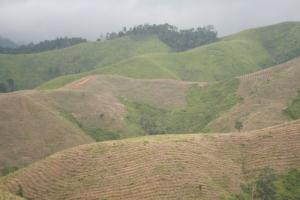UN & Vietnam Teams to Clean Up Agent Orange

Cleaning up the environment remains to be among the biggest concern for the Vietnamese authorities for over a period now. From what are considered their priorities, cleaning up the dioxin-contaminated areas is always on top of the list. Known as ‘hot spots’, the areas identified as focal points for decontamination are two former US air bases in Da Nang and Phu Cat airport, some in Bien Hoa as well as several other smaller parts in central Vietnam. A June 2010 report from the US-Vietnam Dialogue Group claims a total of 28 ‘hot spots’ known so far.
During 1962 to 1971, the U.S. military scattered roughly 11 million gallons (41 million liters) of Agent Orange across large swaths of the country. A major component of the agent, dioxin is a toxic chemical used as herbicide and has been linked to cancers, birth defects, and a long list of other ailments. Most of the exposure to the dioxin is in the food, the water and air around the contaminated areas. To reduce exposure, Vietnamese authorities have restricted access to contaminated areas and prohibited the residents from fishing in a lake believed to be associated with the chemical.
With the concentration of dioxin in these three main hotspots at a much higher rate than nationally and internationally agreed standards, U.S. officials turn attention to the deadly legacy of Agent Orange. In fact, since 2007, the U.S. Congress has approved $9 million relating to repairing damages caused by the chemical in Vietnam, mostly to address environmental cleanup. A recently signed memorandum of understanding outlines how the U.S. and Vietnam governments will work together to improve environmental, health, and social conditions around Da Nang Airport, where the toxic agent was specifically stored during the Vietnam War.
Last month, the US-Vietnam Dialogue Group has called on the US government as well as other donors to fund US$300 million in order to address the lingering effects of the toxic chemical. Compared to how much dioxin victims have suffered, the funding is just modest. In fact, the cost of the clean up should not be more of an issue as it could challenge and hinder the improving bilateral relations between the two countries.
Just about the same period last month (June 28), the United Nations Development Program (UNDP) announced the release of a U.S. $5 million cleanup scheme. The money would be released through UNDP and the independent Global Environment Facility and the operations will be carried out by Vietnam’s Ministry of Natural Resources and Environment. Among where the funds would be directed includes the testing of sophisticated technology to destroy dioxin in pilot schemes. The project will employ internationally proven techniques in treating the dioxin-contaminated areas. Comprehensive plans to resolve the lingering effects of the toxic defoliant are further discussed and reviewed.
It would take centuries to reproduce the ecologically balanced mix of flora and fauna that once thrived there. In fact, even after four decades, many ecosystems would not be fully recovered. Such is because dioxin degrades slowly, leaching into soil and working its way into the food supply. With that, it could be passed on through generations. Despite that, the continuing moves to overcome the wartime dioxin aftermath are commendable. Cleaning up the dioxin in the ‘hot spot’ areas is not just for the good of the Vietnamese people, but also for the environment as well. Without these efforts, the toxic agent will continue to contaminate the wider environment and pose a serious health risk to the thousands of Vietnamese living and working nearby.









